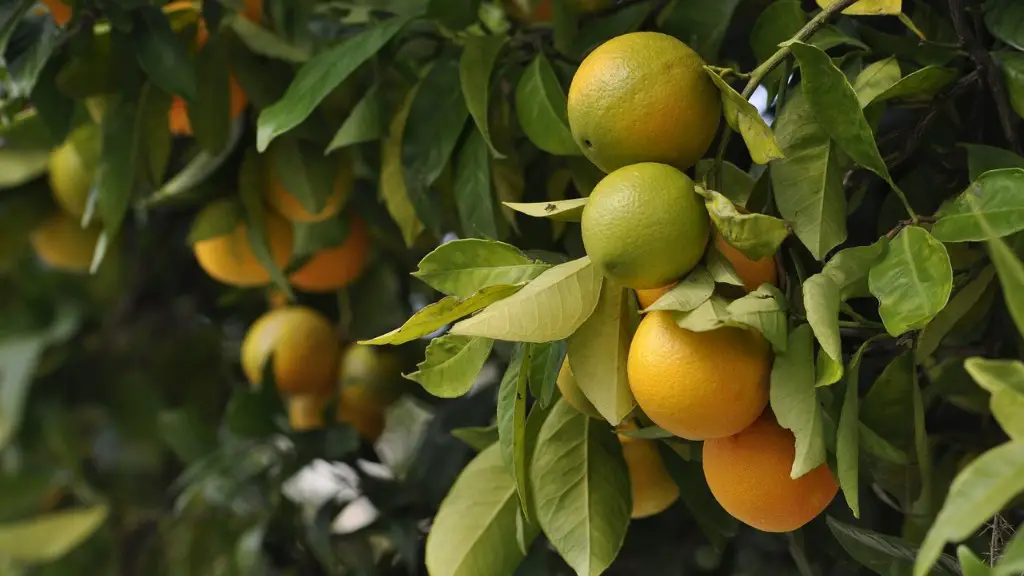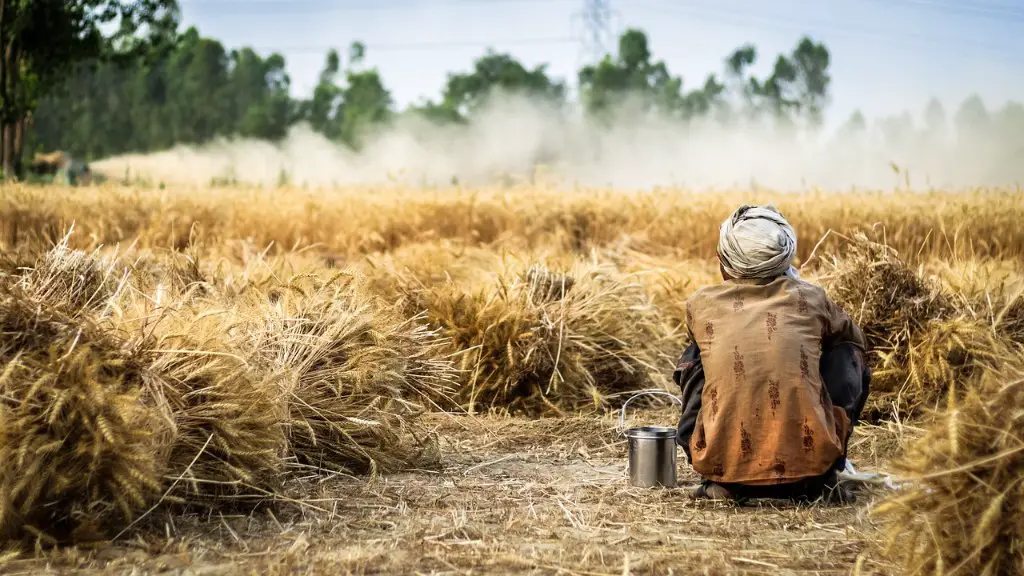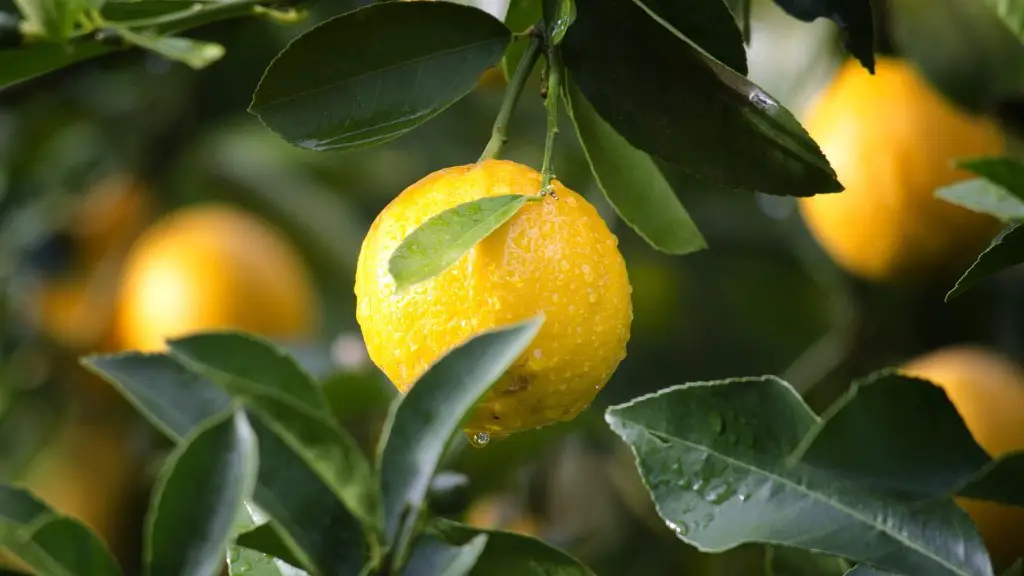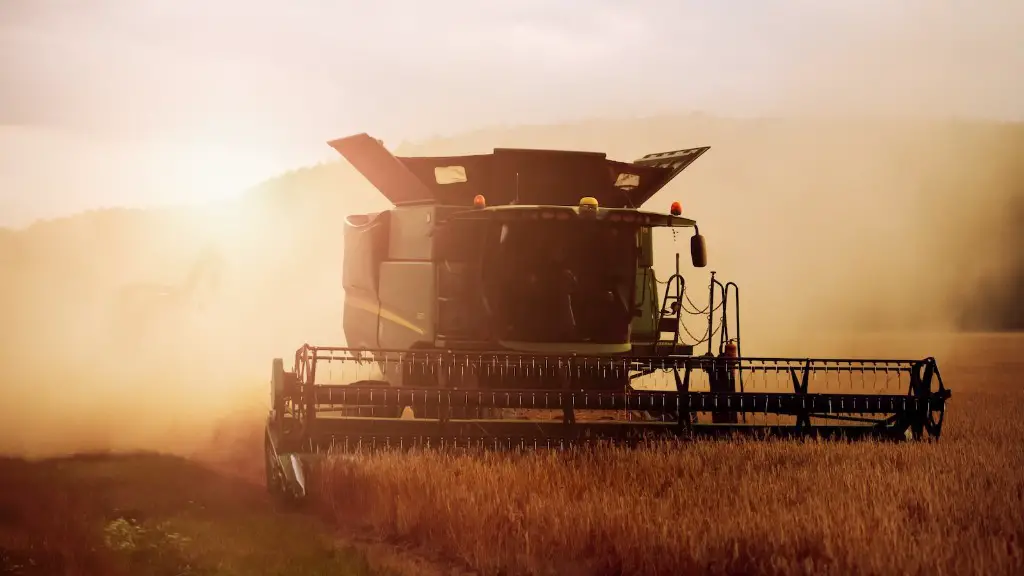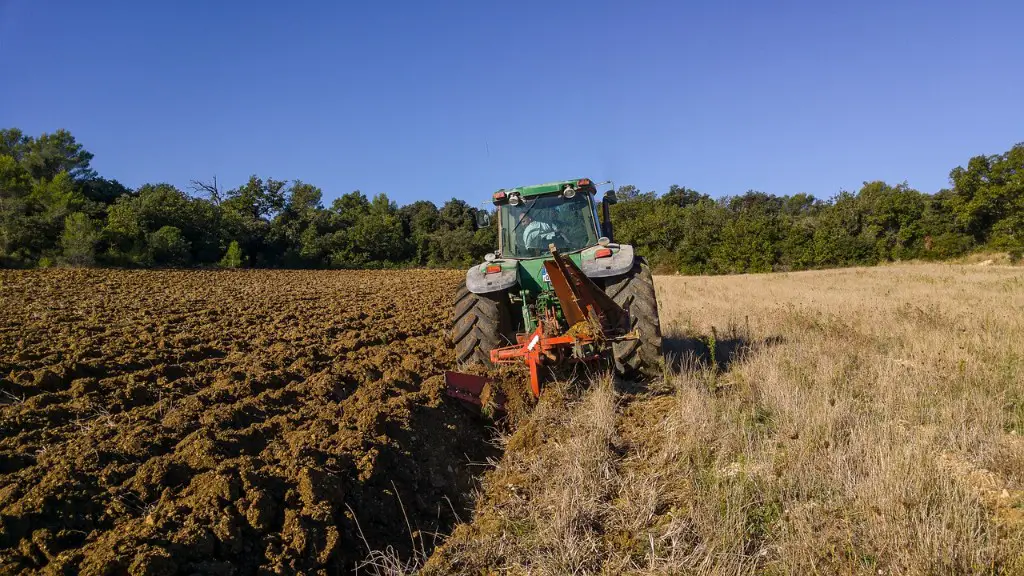Climate change is a popular topic these days, with many people eager to learn about its causes and effects. Agriculture is one of the sectors most commonly cited as a significant contributor to climate change. While it is true that agriculture can impact climate change, it is important to understand the whole picture. In this essay, we will discuss how agriculture affects climate change, both directly and indirectly. We will also explore some of the ways farmers are working to mitigate the issue.
Climate change refers to a broad array of environmental degradation that is predicted to result from increasing levels of atmospheric CO2, including global warming, alterations in precipitation, sea level changes and more extreme weather events. Agriculture contributes to climate change in a number of ways. First, the clearing of land for farming purposes releases large amounts of CO2 that had been stored in vegetation. Second, the burning of fossil fuels to operate farm machinery adds to atmospheric CO2 levels. Finally, certain agricultural practices, such as the overuse of nitrogen-based fertilizers, can also contribute to climate change by releasing greenhouse gases like nitrous oxide.
How does agriculture impact climate change?
Climate change is a major threat to global food security and agricultural production is a major contributor to greenhouse gas emissions. Changes in agricultural production could result in reduced greenhouse gas emissions and removal of carbon dioxide from the atmosphere through carbon sequestration. Farm operators can change production practices or land use to increase the carbon stored in soil or vegetation.
The large-scale, conventional farming system has contributed to climate change, pollution, and depletion of soil fertility. This system of farming focuses on intensive single crop production, mechanization, and dependence on fossil fuels, pesticides, antibiotics, and synthetic fertilizers. While this system may yield high production levels, it also comes at a great cost to the environment.
Is agriculture worst for climate change
Factory farming is one of the main contributors to climate change, as it emits large volumes of greenhouse gases into the atmosphere. These gases trap heat and contribute to the global warming effect, which is causing the Earth’s temperature to rise. This is leading to more extreme weather conditions, rising sea levels and other devastating impacts. Factory farming must be stopped if we are to avoid a climate catastrophe.
While agriculture can have negative impacts on the environment, it can also have positive impacts. Agriculture can trap greenhouse gases within crops and soils, or mitigate flood risks through the adoption of certain farming practices. These positive impacts can help offset the negative impacts of agriculture and improve the overall environmental health of our planet.
What are the 5 major consequences of agriculture?
Agriculture can have a significant impact on the environment, both positive and negative. On the positive side, agriculture can help reduce CO2 levels, improve air quality, provide habitat for wildlife, and provide food. On the negative side, agriculture can lead to soil erosion, water pollution, contribute to climate change, and deforestation.
The production, transportation, and handling of food generates significant carbon dioxide (CO2) emissions. When food ends up in landfills, it generates methane, an even more potent greenhouse gas.
Reducing food waste is one of the most effective ways to reduce our carbon footprint. There are many ways to do this, including meal planning, composting, and donating food to those in need.
Every little bit helps when it comes to reducing our impact on the environment. By making some simple changes in our daily lives, we can make a big difference.
What are 3 problems of agriculture?
It is clear that we cannot address the challenge of feeding a growing population without also addressing the challenges of providing a livelihood for farmers and protecting the environment. We must therefore work to find solutions that tackle all three challenges together. Such solutions will be more sustainable and more effective in the long-term than those that focus on one challenge in isolation.
It is estimated that agriculture accounts for 70% of the world’s water use, and yet it is also the world’s biggest polluter. How is this possible?
The main cause of this paradox is the way in which water is used in farming. In order to irrigate crops, vast quantities of water are required, and this water often contains pollutants that can contaminate surrounding ecosystems. In addition, agricultural runoff can collect pesticides and fertilizers, which can also pollute waterways.
The consequences of this pollution can be devastating. Ecosystems can be harmed, and drinking water can be contaminated. In addition, the pollution of waterways can have a knock-on effect on fisheries, as the water can become toxic to fish and other aquatic life.
This problem is compounded by the fact that agriculture is a major contributor to climate change. Agriculture accounts for around 10% of global greenhouse gas emissions, and this is expected to increase in the future as demand for food grows.
The solution to this problem lies in sustainable agriculture. This means producing food in a way that doesn’t damage the environment, and it is something that the EU is committed to. The EU’s common agricultural policy includes a number of measures to promote sustainable agriculture, such as
How do farmers contribute to global warming
The industrial agriculture industry is a significant source of US greenhouse gas emissions. Farm equipment emits carbon dioxide as vehicles move across fields during tilling, planting, pesticide and fertilizer applications, and harvest. In addition, methane and nitrous oxide are emitted from animal manure, while nitrous oxide is also emitted from soil as a result of fertilizer use. These emissions contribute to climate change, which threatens the long-term viability of the agricultural industry.
Agricultural pollution has many different sources. Nitrogen-based fertilizers can produce potent greenhouse gases and can overload waterways with dangerous pollutants. Chemical pesticides can contaminate our air and water or reside directly on our food.
What are the main disadvantages of agriculture?
There are a few key disadvantages of industrial agriculture that are worth noting. One of the biggest is deforestation, as this type of farming requires a lot of land. This can lead to the destruction of natural habitats and the displacement of wildlife. Additionally, intensive farming can cause soil degradation and lead to the expansion of new lands. This can lead to a loss of biodiversity as well as contribute to climate change. Furthermore, pest and weed resistance to chemicals is another downside of this type of agriculture, as it can lead to the contaminated soil and water.
If you’re looking for a cleaner, greener, and more modern country to relocate to, look no further than Canada! Here are just some of the reasons why you should consider making the move today:
-Lack of modernization and mechanization: Canada is a highly developed country with a sophisticated infrastructure. This means that you’ll have access to modern conveniences and amenities that you may be lacking in your current location.
-Illiteracy: Canada has a high literacy rate, meaning that you’ll be able to take advantage of educational opportunities and have access to a wealth of knowledge.
-Ignorance: Canada is a multicultural country with a diverse population. This means that you’ll be exposed to new cultures and viewpoints, and you’ll never have to worry about feeling out of place.
-Lack of funds: Canada is a wealthy country with a strong economy. This means that you’ll have access to plentiful resources and opportunities to find gainful employment.
-Poor infrastructure/lack of social amenities: Canada has a well-developed infrastructure, meaning that you’ll have access to modern conveniences and social amenities.
-Absence of modern storage/processing facilities: Canada has modern storage and processing facilities,
What pollution is caused by agriculture
Pollutants from agriculture can have a significant impact on water quality. They can be found in lakes, rivers, wetlands, estuaries, and groundwater. Pollutants from farming include sediments, nutrients, pathogens, pesticides, metals, and salts. Animal agriculture has a particularly large impact on pollutants that enter the environment.
Agricultural land is being lost at an alarming rate due to development and other factors. This is a major problem because it means that there is less land available for food production. In addition, the loss of agricultural land can lead to a decrease in the variety of crops and livestock produced. This can have a devastating impact on the food supply and the economy.
How does agriculture cause air pollution?
Animal-raising operations are a major source of air pollution, particularly methane, nitrous oxide, and ammonia. Cattle, pigs, and chickens are particularly prone to releasing these pollutants into the air. This air pollution can have serious effects on human health, as well as the environment.
Non-food agricultural products contribute a significant amount to global emissions, but are often not included in estimates. This is because these products are not used for food, but for other purposes such as clothing, fuel, and construction. When these products are included in estimates, they contribute 33% to global emissions. This Highlights the importance of considering all sources of emissions when estimating the total contribution of agriculture to climate change.
Warp Up
The impact of agriculture on climate change is twofold. First, agriculture itself is a significant source of greenhouse gases like carbon dioxide and methane. Second, the way we manage our agricultural land can either amplify or help mitigate climate change.
Deforestation, for example, releases large amounts of carbon dioxide into the atmosphere. On the other hand, planting trees and other plants can help remove carbon dioxide from the air and combat climate change. Sustainable agricultural practices can help improve soil health, increase carbon sequestration, and reduce greenhouse gas emissions.
Agriculture has a significant impact on climate change. Agricultural activities emit greenhouse gases, which contribute to climate change. Additionally, agriculture affects the amount of carbon dioxide and water in the atmosphere, which can amplify the effects of climate change.
